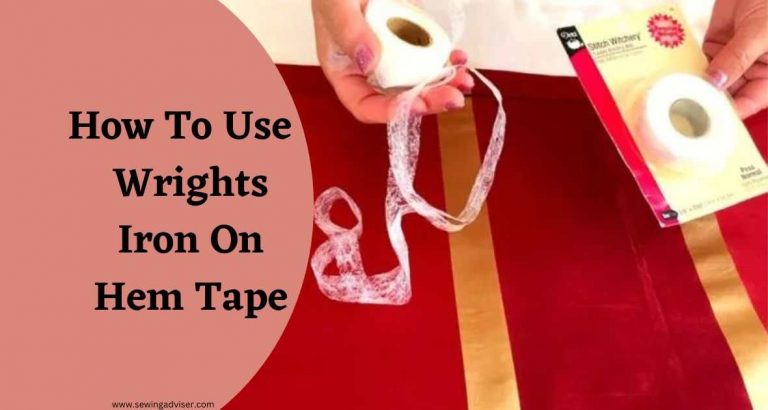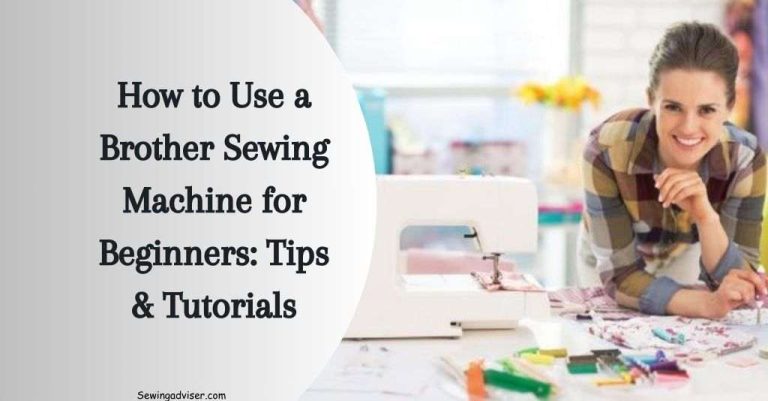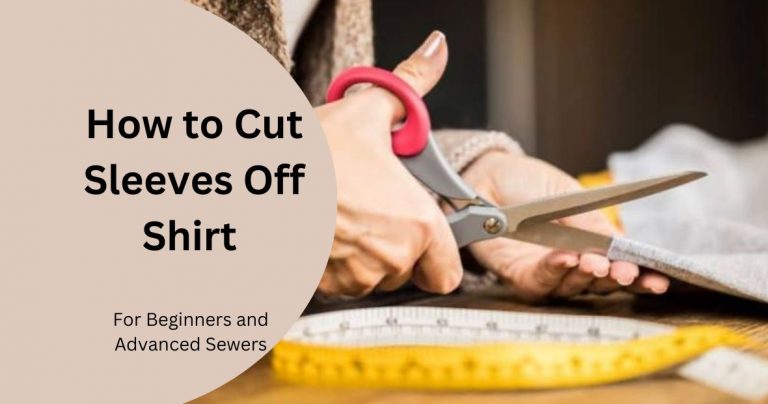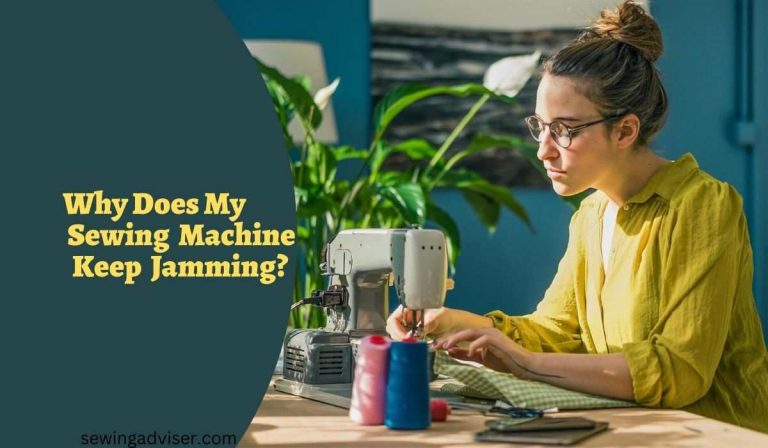How To Use A Commercial Sewing Machine Easily In 2024
Sewing with a commercial sewing machine can be an efficient and rewarding experience. Whether you’re a professional seamstress or just getting started, mastering the use of this powerful tool is essential. Understanding the various stitches and their applications will elevate your sewing projects to new heights.
Understanding how to use a commercial sewing machine opens up endless creative possibilities and ensures precise and durable stitching. With clear guidance on essential techniques and maintenance practices, you’ll gain confidence in utilizing this versatile equipment for all your sewing endeavors.
Basics of Usage
Threading Techniques
Properly threading the machine is crucial for smooth and efficient sewing. Threading a commercial sewing machine involves understanding different techniques specific to various models.
For example, some machines may have a different thread path or require specific tension adjustments.
Tips and tricks for threading accurately include ensuring the presser foot is raised before threading, using good quality threads that are suitable for the fabric being sewn, and regularly cleaning the machine to prevent lint buildup.
It’s important to refer to the manufacturer’s manual for detailed instructions on how to thread your specific model of commercial sewing machine.
Sewing Mastery
Mastering the art of sewing with a commercial machine takes practice and patience. Developing precision and control while using a commercial sewing machine involves familiarizing oneself with its various features, such as stitch length adjustment, speed control settings, and needle positioning options.
Enhancing sewing skills also requires understanding the different types of stitches available on the machine straight stitch, zigzag stitch, overlock stitch, etc., and how they can be used effectively for different projects.
Practicing on scrap fabric before starting an actual project can help in gaining confidence in handling the commercial sewing machine more proficiently.
Preparing Your Workspace
Machine Setup
Setting up a commercial sewing machine correctly is essential for optimal performance. Adjusting the tension, stitch length, and other settings to suit specific sewing projects is crucial. Proper machine setup plays a significant role in achieving the desired results.
For instance, when working on lightweight fabrics like silk or chiffon, it’s important to adjust the tension to prevent puckering or pulling of the fabric. On the other hand, heavier fabrics such as denim require different tension settings for smooth and even stitches.
Understanding these nuances and making appropriate adjustments ensures that your sewing machine operates at its best capacity for each project you undertake.
Essential Tools
Identifying essential tools required for operating a commercial sewing machine is vital. Exploring different types of presser feet, needles, and other accessories can significantly impact your work quality and efficiency.
For example:
- Different presser feet are designed for various purposes such as zippers, buttonholes, quilting, etc.
- Needles come in different sizes suitable for different fabric weights.
- Other accessories like bobbins and bobbin cases also play an important role in ensuring smooth operation.
Building a comprehensive toolkit with all these essential tools will enhance productivity by allowing you to seamlessly transition between different tasks without compromising on quality.
Threading Your Commercial Sewing Machine
Top Thread Guide
Understanding the top thread guide is crucial when using a commercial sewing machine. The top thread guide helps direct the thread from the spool to the needle, ensuring smooth and even stitching.
To navigate through the thread path effectively, start by lifting the presser foot to release tension on the upper thread.
Then, follow the threading diagram provided in your machine’s manual to ensure proper placement of the thread through each guide and tension disc.
When troubleshooting issues related to the top thread guide, always check for tangled or unevenly wound threads on your spool.
Ensure that you are using high-quality thread suitable for your fabric type and thickness. Inspect if there are any obstructions or debris within the upper threading path that may be affecting its smooth movement.
Bobbin System
Familiarizing yourself with the bobbin system of a commercial sewing machine is essential for successful stitching. Proper winding of bobbins ensures consistent tension in both upper and lower threads during sewing.
Before inserting a bobbin into its case, make sure it has been correctly wound with an appropriate amount of tension applied to prevent loose or tight stitches.
When encountering bobbin-related problems during sewing, always double-check if you have inserted it correctly into its designated case following your machine’s instructions precisely.
If you notice erratic stitch patterns or inconsistent tension between upper and lower threads, re-thread both systems entirely while paying close attention to any signs of wear or damage on either set of threads.
How To Thread an Industrial Sewing Machine Tutorial
Starting Your Sewing Project
Fabric Selection
When using a commercial sewing machine, it’s crucial to choose the right fabrics. The fabric weight, thickness, and stretch impact stitching quality.
For heavy fabrics like denim, use a thicker needle to prevent breakage. Lightweight fabrics require finer needles to avoid puckering.
Read Also: Best Sewing Machine for Heavy Fabrics
Consider the fabric’s stretch when selecting suitable materials for your project. Fabrics with high stretch levels might need specific stitches or adjustments on the machine to prevent seam breakage. Always test stitch on a scrap piece of fabric before starting your project.
Machine Adjustments
To achieve optimal results with your commercial sewing machine, make necessary adjustments based on the chosen fabric and desired stitches.
Needle position adjustment ensures that the needle penetrates the fabric at the correct point, preventing skipped stitches or damage to delicate materials.
Fine-tune presser foot pressure according to the fabric type; heavier fabrics may require more pressure for smooth feeding while lighter ones need less pressure to avoid distortion.
Adjust feed dog height lower it for thick fabrics and raise it for thin ones to ensure proper material movement during stitching.
Maximize your commercial sewing machine’s capabilities by customizing its settings as per your project requirements.
Experiment with different stitch lengths and tensions until you achieve the desired outcome on a test piece of fabric before moving on to your actual project.
How To Use A Commercial Sewing Machine
Whether you’re a seasoned seamstress or just diving into the world of fabric and thread, mastering the art of using a commercial sewing machine can take your craft to new heights.
1. Thread the Needle with Finesse
Imagine threading a needle is like weaving a tiny magical spell. First, grab your spool of thread and slip it onto the spool pin. Now, guide the thread through the machine’s threading pathway.
It’s a bit like navigating a maze, but don’t worry you’ve got this! Once you reach the needle, slide the thread through its eye and let a little tail hang loose. Now you’re ready to start stitching enchanting patterns.
2. Bobbin Magic
Every magician needs a secret, and for your sewing machine, it’s the bobbin. Slide your bobbin onto the bobbin winder spindle, then wind the thread around it.
Once you’ve worked your bobbin magic, place it in the bobbin case beneath the needle. It’s like setting the stage for your sewing spectacle the bobbin plays a crucial supporting role in this textile performance.
3. Adjust the Tension
Just like life, sewing is all about balance. The tension dial on your commercial sewing machine is your trusty scale for achieving perfect equilibrium.
Too tight, and your fabric might pucker; too loose, and you risk loose stitches. Play with the tension dial until your stitches dance harmoniously on the fabric, like a perfectly choreographed routine.
4. Master the Pedal Dance
Your sewing machine’s foot pedal is your dance partner in this creative waltz. Gently press down to start the music, guiding your fabric with grace.
The pedal is your control over the tempo press lightly for slow and steady, and press harder for a lively and swift sewing experience. It’s a dance between you, the pedal, and the fabric, creating a seamless rhythm.
5. Swap Feet for Versatility
Just as you switch shoes for different occasions, you can change presser feet to match your sewing needs.
From zigzag to buttonhole feet, each serves a unique purpose in your sewing repertoire. It’s like having a variety of dance shoes for different dance styles ensuring you’re always ready for the next creative step.
6. Explore Stitch Styles
A commercial sewing machine is an artist’s palette of stitches. Straight stitches, zigzags, and decorative stitches each one adds a layer of expression to your fabric canvas.
Experiment with different stitch styles to create your unique masterpiece. It’s the equivalent of using various brush strokes to bring your artistic vision to life.
7. Oil the Machine
Every performer needs a bit of pampering, and your sewing machine is no exception. Give it a touch of tender loving care by oiling its mechanical parts regularly.
It’s like a soothing massage for your machine, ensuring it stays in top-notch condition for all your future creative endeavors.
Sewing Techniques for Professionals
Stitch Types
Commercial sewing machines offer a variety of stitch types to cater to different fabric and project requirements.
For instance, the straight stitch is ideal for basic seams and topstitching, while the zigzag stitch is perfect for finishing edges or sewing stretch fabrics.
By understanding the purpose and application of each stitch type, professionals can ensure precise and durable seams.
Mastering the selection and execution of appropriate stitches is crucial for achieving high-quality results. When working on delicate fabrics, opting for a fine, narrow stitch prevents puckering or damage.
Conversely, heavier materials necessitate longer stitches to withstand stress without breaking. By experimenting with various stitch lengths and widths on scrap fabric before starting a project, professionals can determine the most suitable settings.
Handling Thick Fabrics
Sewing thick fabrics using a commercial sewing machine requires specific techniques to ensure smooth stitching without compromising the material’s integrity.
Adjusting the machine’s settings by using a larger needle size helps penetrate heavy-duty fabrics effortlessly while preventing skipped stitches. Utilizing specialized presser feet designed for thick materials ensures even feeding during stitching.
Overcoming challenges associated with stitching thick fabrics involves maintaining consistent speed throughout the sewing process to prevent jams or uneven stitching.
Moreover, employing proper thread tension adjustments prevents loose stitches or fabric puckering when working with bulky textiles like denim or canvas.
Maintaining Your Machine
Regular Cleaning
Commercial sewing machines require regular cleaning to ensure optimal performance. Lint buildup is a common issue that can affect the machine’s operation, leading to skipped stitches and thread breakage.
By cleaning the bobbin area, feeding dogs, and needle plate, you can prevent lint accumulation and maintain smooth stitching.
Proper cleaning techniques involve using a small brush or compressed air to remove lint from hard-to-reach areas. oiling the machine’s moving parts as per the manufacturer’s guidelines is essential for smooth operation.
Neglecting regular cleaning can result in decreased productivity and may lead to costly repairs.
To extend the lifespan of your commercial sewing machine, it’s crucial to establish a routine maintenance schedule.
This includes keeping track of servicing dates, replacing worn-out parts promptly, and adhering to recommended lubrication intervals.
By incorporating these practices into your workflow, you can ensure that your machine operates efficiently for years to come.
Troubleshooting
Identifying common issues with a commercial sewing machine is an integral part of ensuring uninterrupted workflow. Problems such as skipped stitches or tangled threads can arise during operation but can often be resolved without professional assistance.
When encountering issues like skipped stitches, start by checking the needle size compatibility with the fabric being used. Using an incorrect needle size could lead to stitching problems; therefore, switching to an appropriate needle size might resolve this issue.
For tangled threads or bird nesting (excessive thread loops on the underside of fabric), rethreading both the upper thread and bobbin thread following proper threading paths is essential for resolving this problem effectively.
In case of technical difficulties beyond basic troubleshooting steps, referring to the manufacturer’s manual for specific guidance on problem-solving is advisable before seeking professional help.
Enhancing Skills and Knowledge
Online Resources
Utilizing online resources is a fantastic way to enhance your skills in using a commercial sewing machine. There are numerous tutorials, forums, and videos available that can provide valuable insights into the operation and maintenance of these machines.
For example, you can find step-by-step video tutorials on threading the needle, adjusting tension settings, or troubleshooting common issues.
Trusted websites often offer comprehensive guides on different types of commercial sewing machines, helping users understand their features and functionalities better.
Joining online communities dedicated to sewing is another excellent way to gain knowledge about commercial sewing machines.
These platforms allow individuals to connect with fellow sewists from around the world, exchange tips and tricks related to using commercial-grade equipment effectively, and seek advice when encountering challenges with their machines.
By participating in discussions within these online communities, users can expand their understanding of various aspects of operating a commercial sewing machine through shared experiences.
Community Engagement
Engaging with the sewing community offers unique opportunities for individuals looking to improve their skills in using a commercial sewing machine.
Participating in workshops or classes specifically tailored to working with industrial-grade equipment can provide hands-on experience under the guidance of experienced instructors.
Workshops may cover topics such as advanced stitching techniques, utilizing specialized attachments, or optimizing productivity when working with heavy-duty fabrics.
Attending events related to commercial sewing machines allows enthusiasts to network with industry professionals while gaining practical knowledge about the latest advancements in technology and techniques for maximizing efficiency during production processes.
Building connections within this niche community creates avenues for sharing ideas and experiences that contribute significantly towards enhancing one’s proficiency in utilizing these powerful tools effectively.
Engaging with the Sewing Community
Commenting Tips
When engaging with other sewists, it’s essential to leave thoughtful comments on blogs or forums. Constructive feedback and support can go a long way in fostering a positive atmosphere within the sewing community.
By providing encouragement and helpful insights, individuals can create meaningful interactions that contribute to everyone’s growth as sewists.
Offering constructive feedback is an effective way to engage with others in the sewing community. Whether it’s praising someone for their creativity or gently pointing out areas for improvement, thoughtful comments can make a significant impact.
Moreover, by expressing support and admiration for fellow sewists’ work, individuals help build a supportive environment that encourages skill development and confidence.
Enhancing communication skills through meaningful interactions is crucial when engaging with the sewing community.
By actively participating in discussions and offering valuable input, individuals not only improve their abilities but also contribute to creating an inclusive environment where everyone feels valued.
Sharing Experiences
Sharing personal experiences and projects created using a commercial sewing machine is an excellent way to connect with others in the sewing community.
By showcasing successful endeavors, individuals inspire fellow sewists while also demonstrating the capabilities of commercial sewing machines.
This sharing of experiences fosters collaboration and learning among members of the community.
Inspiring others by showcasing successful sewing endeavors creates an environment where people feel motivated to explore new techniques and projects using their commercial sewing machines.
When individuals share their achievements whether big or small they contribute to building a culture of positivity within the community.
Encouraging dialogue and collaboration within the sewing community is vital for collective growth as sewists.
By openly discussing challenges faced during projects or seeking advice from peers, members foster an atmosphere of mutual support that benefits everyone involved.
Keeping Up-to-Date with Sewing Trends
Fashion Incubator Insights
Commercial sewing machines play a crucial role in the fashion industry, offering valuable insights into garment production processes.
By understanding how commercial machines contribute to these processes, individuals can stay updated on the latest trends and techniques in clothing manufacturing.
For instance, advanced sewing techniques made possible by commercial machines allow entrepreneurs to create intricate designs and tailored garments that align with current fashion trends.
See Also: Best Sewing Machine for Fashion Designers
Exploring opportunities in fashion entrepreneurship is another way to keep up-to-date with sewing trends using a commercial machine.
With the help of advanced equipment, aspiring designers can delve into unique design elements and experiment with different fabrics, contributing to trendsetting styles in the fashion world.
By leveraging a commercial sewing machine’s capabilities, individuals can stay ahead of emerging fashion trends and establish themselves as innovative contributors within the industry.
Archive Access
Accessing valuable information from sewing machine archives offers an insightful perspective on historical commercial sewing machines and their significance.
Through this access, enthusiasts can gain knowledge about past technologies and understand their impact on contemporary practices.
Learning from the evolution of sewing technology through archived materials provides a comprehensive view of how far commercial machines have come and how they continue to shape modern garment production.
Exploring historical commercial sewing machines also allows individuals to appreciate the craftsmanship behind earlier models while gaining inspiration for new design approaches.
By studying archived resources related to these machines, users can uncover unique features or functionalities that were once prevalent but may still hold relevance today when incorporated into modern designs or production methods.
How To Use an Industrial Sewing Machine Easily
Closing Thoughts – How To Use A Commercial Sewing Machine
In conclusion, mastering the usage of a commercial sewing machine requires a combination of technical know-how and practical skills. From setting up the workspace to learning advanced sewing techniques, each step plays a crucial role in achieving professional results. By maintaining the machine and staying updated with industry trends, individuals can ensure continuous improvement in their craft.
For those aspiring to excel in commercial sewing, consistent practice and engagement with the sewing community are essential. Whether it’s attending workshops, seeking mentorship, or sharing knowledge with fellow enthusiasts, active participation can significantly enhance one’s expertise. Embracing these aspects not only fosters personal growth but also contributes to the vibrant tapestry of the sewing industry.
Frequently Asked Questions
How can I prepare my workspace for using a commercial sewing machine?
To prepare your workspace, ensure it is well-lit and organized. Clear the area of any clutter to allow for smooth movement and access to materials. Position the machine on a sturdy table at an appropriate height, with ample space around it.
What are some essential maintenance tips for a commercial sewing machine?
Regularly clean lint and dust from the machine, oil moving parts as recommended by the manufacturer, and check for loose or damaged components. Schedule professional servicing at least once a year to ensure optimal performance.
How can I enhance my sewing skills and knowledge?
Consider taking classes or workshops offered by experienced professionals. Joining online communities or forums dedicated to sewing can also provide valuable insights and opportunities to learn from others in the field.
What are some common sewing techniques used by professionals?
Professional sewers often utilize techniques such as backstitching, understitching, edge stitching, and topstitching to achieve clean finishes and durable seams. These techniques contribute to creating high-quality garments or products.
Where can I stay updated with current trends in the sewing industry?
Stay informed about the latest trends by following reputable blogs, attending industry events such as trade shows or exhibitions, subscribing to industry publications, and engaging with fellow sewers on social media platforms dedicated to crafting and sewing.







3 Comments